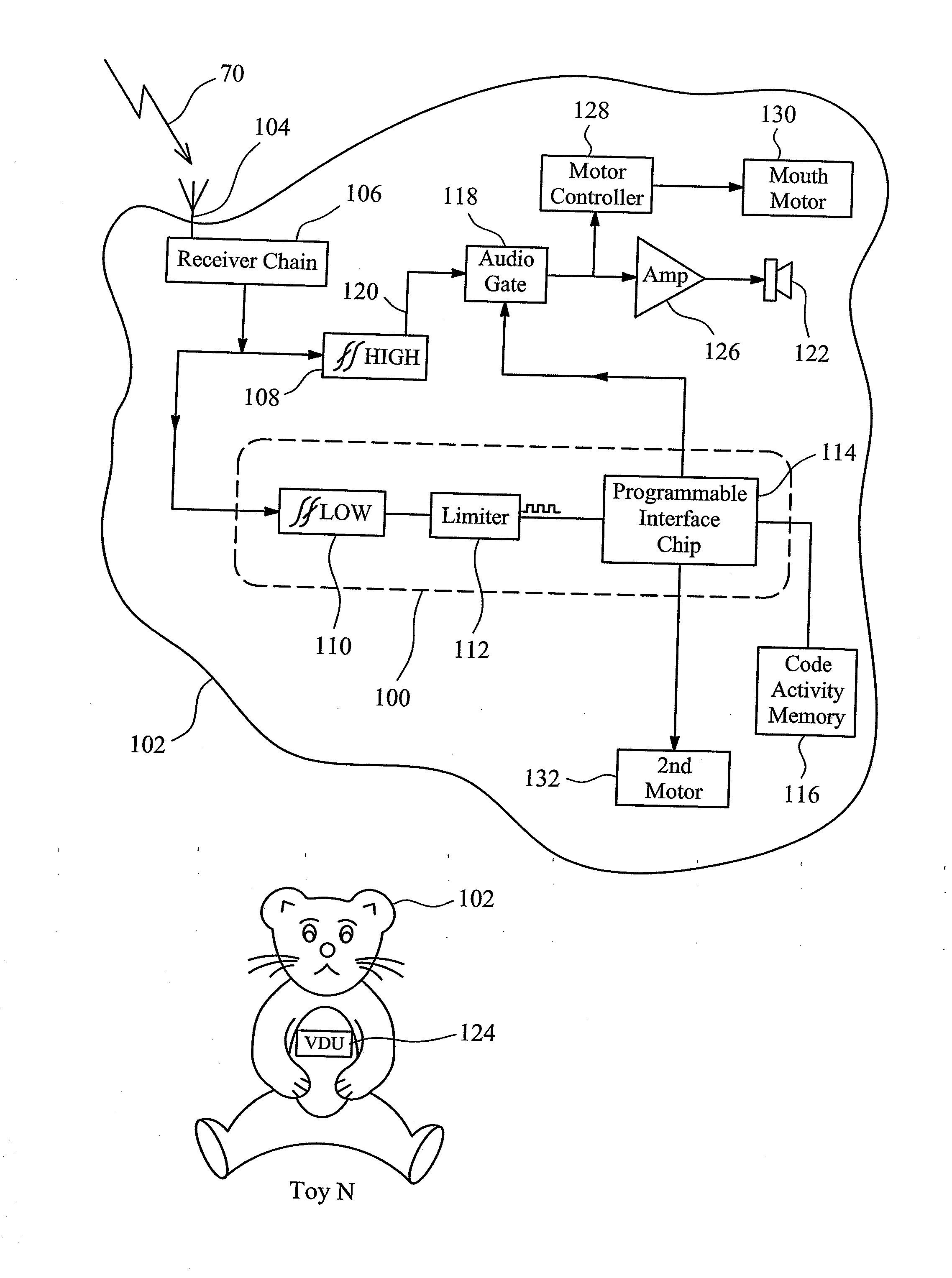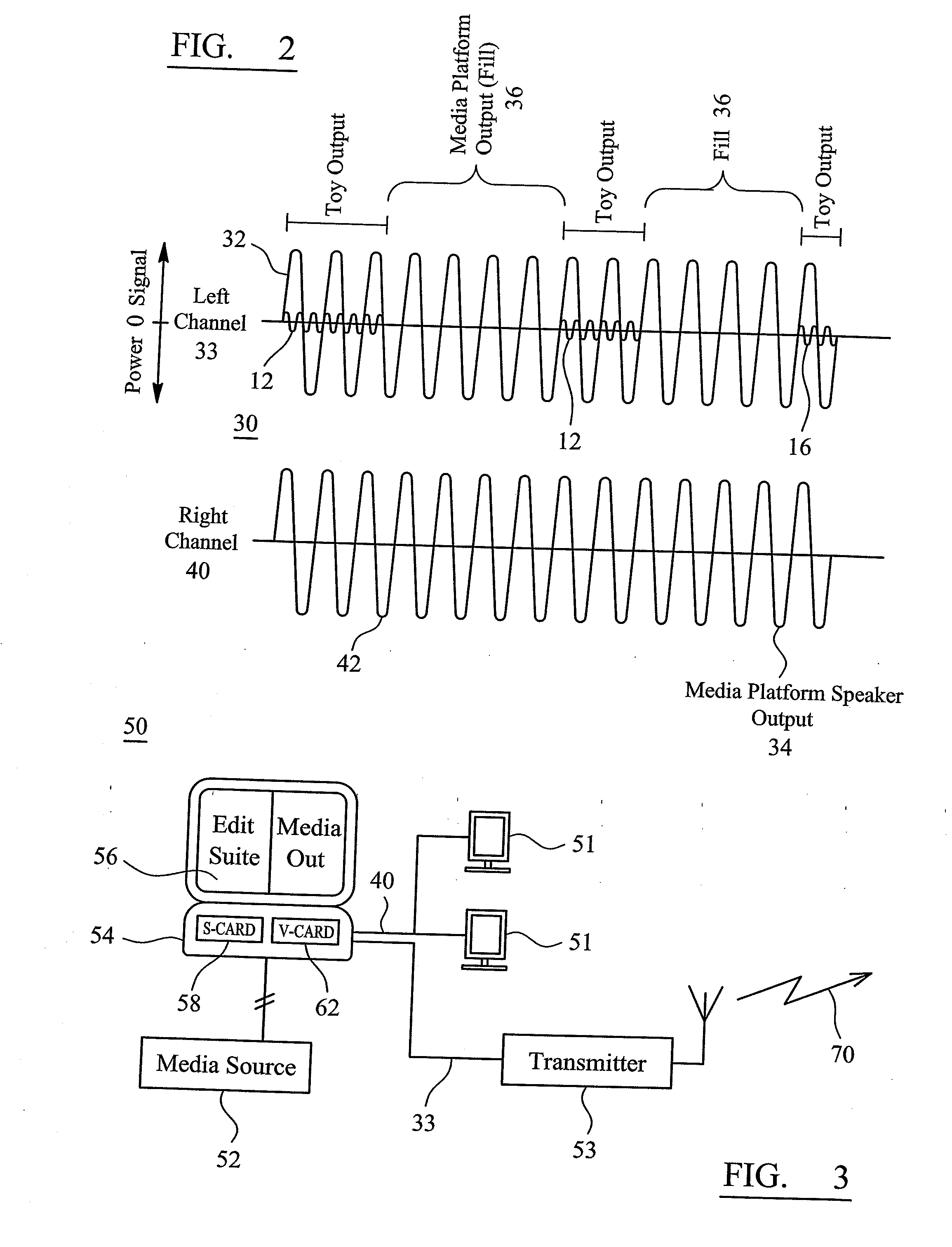Interactive toys and a method of synchronizing operation thereof
a technology of interactivity and toys, applied in the field of interactivity toys, can solve the problems of inability to deal with selective switching of audio output, inability to detect transmissions in the high frequency range, and a certain amount of intrigue and curiosity in young children, so as to reduce interference risk, prevent tampering with toys, and high synchronization
- Summary
- Abstract
- Description
- Claims
- Application Information
AI Technical Summary
Benefits of technology
Problems solved by technology
Method used
Image
Examples
Embodiment Construction
[0019]Turning to FIG. 1, a waveform diagram 10 illustrates how (in accordance with a preferred embodiment of the present invention) sub-audible tones 12-18 are encoded relative to time disparate audio segments 20-24 designated for one or more toys. For a specific toy, a succession (but not necessarily a contiguous succession) of audio segments (such as speech envelopes 20 and 21) constitute an audio track for that particular toy. Therefore, the audio track may contain pauses where the toy is silent. In a preferred embodiment of the invention, each audio segment for each toy is assigned a common identifying code in the form of a CTCSS signal which is presently for the entire duration of the speech envelope. The CTCSS signal therefore rises at substantially the beginning of the speech envelope and then ceases at substantially the end of the specific speech envelope.
[0020]Therefore, a first toy (“Toy 1) will have a first sub-audible tone 12, whereas a second toy will have a second, but...
PUM
 Login to View More
Login to View More Abstract
Description
Claims
Application Information
 Login to View More
Login to View More - R&D
- Intellectual Property
- Life Sciences
- Materials
- Tech Scout
- Unparalleled Data Quality
- Higher Quality Content
- 60% Fewer Hallucinations
Browse by: Latest US Patents, China's latest patents, Technical Efficacy Thesaurus, Application Domain, Technology Topic, Popular Technical Reports.
© 2025 PatSnap. All rights reserved.Legal|Privacy policy|Modern Slavery Act Transparency Statement|Sitemap|About US| Contact US: help@patsnap.com



